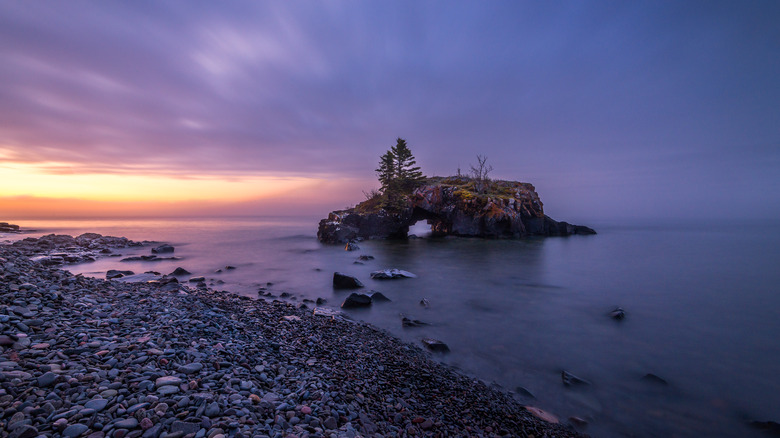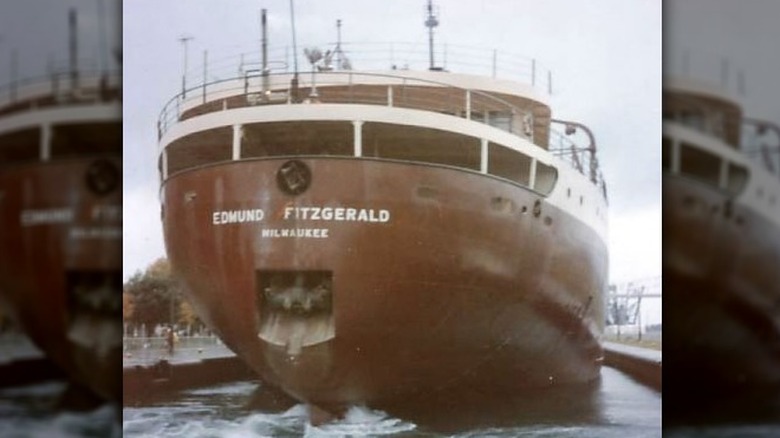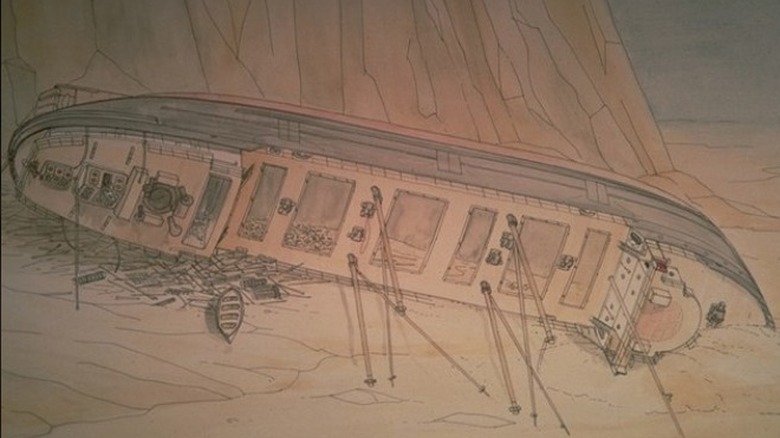The Chilling Reason Why Lake Superior 'Never Gives Up Her Dead'
As the 2021 documentary "Freshwater" explains, Lake Superior (along the U.S.-Canadian border in the upper Midwest) is the largest freshwater lake in the world. To this day, much of what resides at its depths remains unexplored. Prior to the European arrival in North America, the lake — touching parts of three present-day U.S. states — was important for indigenous populations in the region. After European colonization, the great lake became a central hub for trade and commerce (via the University of Missouri-Kansas City).
Wherever there are boats, cold temperatures, and deep water, though, such as in Lake Superior, shipwrecks are bound to happen. Per the Split Rock Lighthouse from the Minnesota Historical Society, at least 350 vessels are known to have sunk in Superior's icy depths. More wrecks are still waiting to be found. That said, human remains that go down with those ships are rarely recovered, as those bodies fail to float to the surface. The reason why proves Lake Superior is, without a doubt, among the rarest and most unique bodies of water on the planet.
'Old Whitey' went down in 1927
One of Lake Superior's most well-known shipwrecks, immortalized in the Gordon Lightfoot song "The Wreck of the Edmund Fitzgerald," happened in 1975, according to the Shipwreck Museum, when all 29 men aboard the freighter called the Edmund Fitzgerald (pictured) were lost. Many mysteries remain about exactly what caused the accident. Another well-known wreck in Superior happened much earlier, though, when the SS Kamloops Canadian lake freighter sank to the depths in the winter of 1927, lost in fog and freezing temperatures (via Superior Trips).
The physical location of the Kamloops has since been found, according to the National Park Service, and the remains of Kamloop crew members who tried to swim to safety on the remote Isle Royale in Lake Superior were also recovered. One victim who went down with the ship — the captain, now known as "Old Whitey," per Astonishing Legends — remains on board the boat — the frigid depths of Lake Superior his final resting place. "Old Whitey"'s body, named for its ghostly white appearance, is said to haunt SS Kamloops explorers to this day.
Bodies in Lake Superior don't 'bloat and float'
According to Grand Rapids, Michigan, media outlet 98.7 FGR, though, the reason victims of shipwrecks in Lake Superior, such as "Old Whitey," don't "bloat and float" as they do in other bodies of water is that the water in the lake, averaging 34 degrees Fahrenheit, is simply too cold for the bacteria to grow that typically causes organic remains to decompose and float to the surface (via Unbound Roots). "Old Whitey's" pearly appearance is a by-product of so much time spent in cold temperatures. The remains are otherwise remarkably — and hauntingly — well-preserved.
In the 350 shipwrecks known to have happened on Lake Superior, an estimated 10,000 people have lost their lives, according to Northern Ontario Travel. For this reason, it's said that "Lake Superior doesn't give up her dead," referring to those unfortunate enough to slip beneath the surface of the vast lake, or according to the folk singer Gordon Lightfoot, "Superior, they said, never gives up her dead." In this case, at least, that old folk saying is very much grounded in truth. A rendering of the SS Kamloops wreck — "Old Whitey"'s final rest place — is pictured above.


